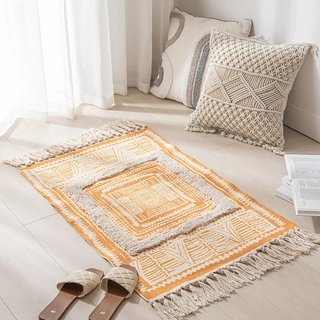Elevating Spaces: Studying the Art of Interior decor
Wiki Article
Home decor can serve as the canvas where we express our personalities, tastes, and aspirations, transforming our living spaces into reflections of our own unique identities and lifestyles. From stylish furnishings and decorative accents to thoughtful arrangements and colors, every element plays a part in creating a harmonious and alluring environment. In the following paragraphs, we'll look into the world of interior decor, exploring its significance, trends, and timeless principles that can help you infuse your property with beauty, warmth, and character.

The Significance of Home Decor:
Home decor goes beyond mere aesthetics; it shapes the climate and ambiance of our living spaces, influencing our moods, behaviors, and overall well-being. Thoughtfully curated decor can evoke feelings of comfort, tranquility, and joy, turning a home into a home. Whether it's a cozy reading nook bathed in sun light, a vibrant accent wall that enlivens an area, or a curated gallery of cherished memories, home decor has the power to change ordinary spaces into extraordinary sanctuaries that nurture the soul.
Trends and Inspirations:
Like fashion and design, home decor is susceptible to trends and influences that evolve as time passes. From minimalist Scandinavian chic to eclectic bohemian charm, there's a myriad of styles and inspirations to attract from when decorating your property. Keeping up to date with current trends provides inspiration and guidance, however it is essential to infuse your individual touch and individuality in your decor choices. Ultimately, the most compelling interiors are the ones that reflect the unique personalities and lifestyles of their inhabitants.
Timeless Principles of Design:
While trends will come and go, certain design principles endure test of time, serving as guiding principles for creating harmonious and visually appealing interiors. Balance, proportion, harmony, and contrast are fundamental concepts that underpin successful interior decor. Whether it's achieving balance through symmetrical arrangements, creating visual interest with contrasting textures and shades, or harmonizing disparate elements to produce a cohesive look, these principles can help you create spaces which are both beautiful and functional.
The Role of Personalization:
Probably the most rewarding areas of you can try here will be the opportunity to infuse your spaces with personal touches and meaningful accents that reflect your interests, passions, and experiences. Whether it is displaying cherished artwork, incorporating heirloom pieces of furniture, or showcasing travel souvenirs collected from around the world, these personal touches add depth and character to your home. Embrace your creativity and allow your imagination go wild as you curate a place that feels uniquely yours.
Creating Cohesive Spaces:
Creating cohesive spaces involves not just selecting individual decor pieces; it will take thoughtful planning and deliberation over how each element plays a part in the overall feel and look of a room. Focus on factors for example scale, proportion, and flow when arranging furniture and decor items, ensuring that each piece complements the others and contributes to a harmonious whole. Try out different layouts, color palettes, and things until you locate a configuration that feels balanced and welcoming.
Conclusion:
Interior decor is a deeply personal and enriching pursuit that allows us to express ourselves, cultivate beauty, that will create spaces that nurture and encourage. Whether you're attracted to contemporary minimalism, timeless elegance, or eclectic bohemian style, there is no one-size-fits-all approach to decorating your house. Embrace your individuality, experiment with different styles and inspirations, and above all, let your home reflect the unique story of your identiity and what you adore. With creativity, intention, along with a touch of imagination, you can transform your rooms into havens of beauty, warmth, and joy.